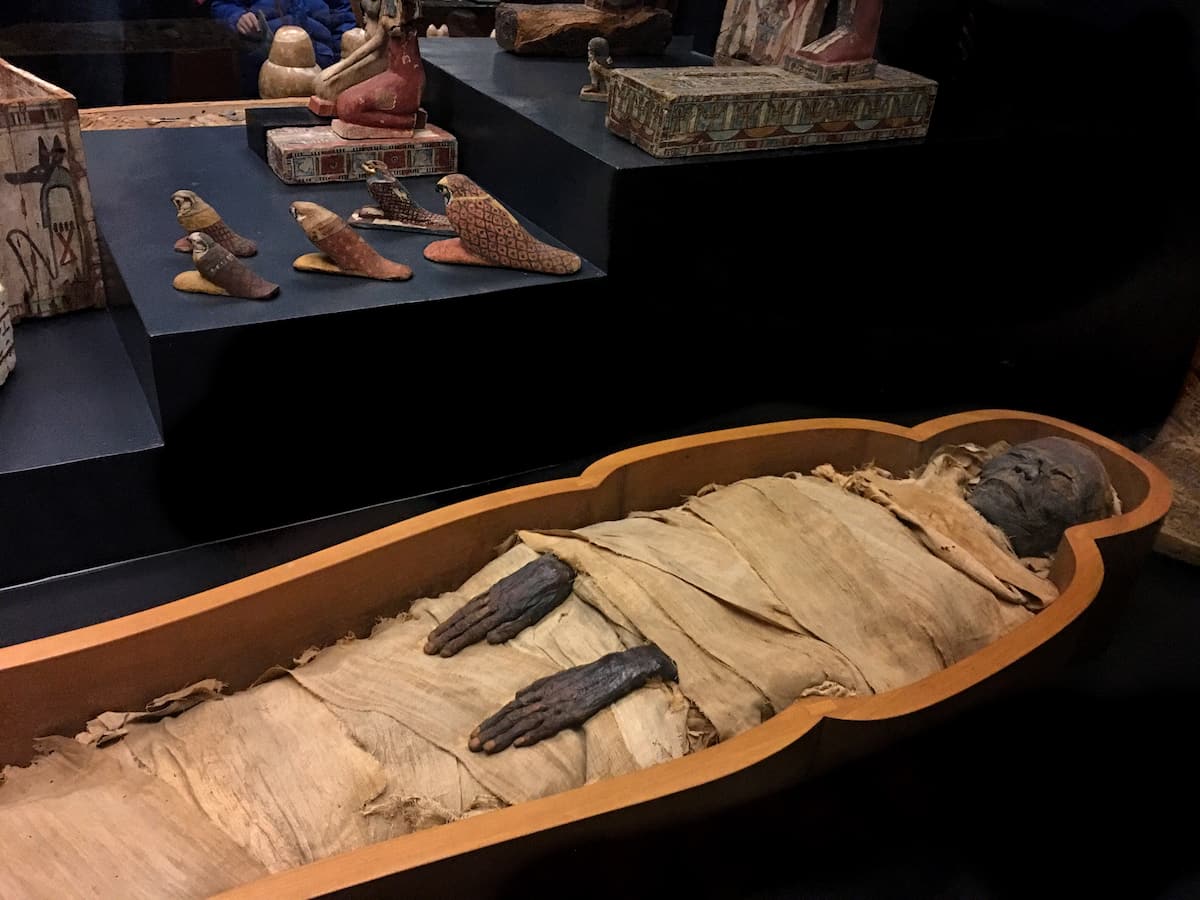Discover The Art of Mummification of The Ancient Egyptians: A Step-by-Step Guide To The Mummification Process
Firstly, we need to understand the meaning and steps of Mummification. So, what is Mummification? Mummification is an ancient way of preserving bodies after death, and many civilizations used this process to keep the bodies from decaying. This act was commonly associated with ancient Egyptian culture. Furthermore, Mummification requires specialized knowledge and skills. Moreover, it played a crucial role in the religious and spiritual beliefs of the time. The process involves removing the internal organs, drying the body, and wrapping it in linen bandages.
So, we have discussed the Mummification process, but what does the Mummy mean, why was that name mainly used, and where did it come from?
First and foremost, the Mummy means the dead body of a human and, in rare cases, an animal’s body. We give that name to the bodies that dried and decayed due to extreme weather conditions or those exposed to some chemical to keep the body in the best condition for time. The word Mummy is taken from the Arabic word “Mummiya,” the animals were widely spread in ancient Egyptian culture. In this guide, we will unravel the mysteries of Mummification, exploring its history, techniques, and the fascinating insights it provides into the past. By understanding Mummification, learn about ancient cultures and develop a deeper appreciation for how different societies honor and remember their departed. Lastly, you will know the steps of mummification in detail.
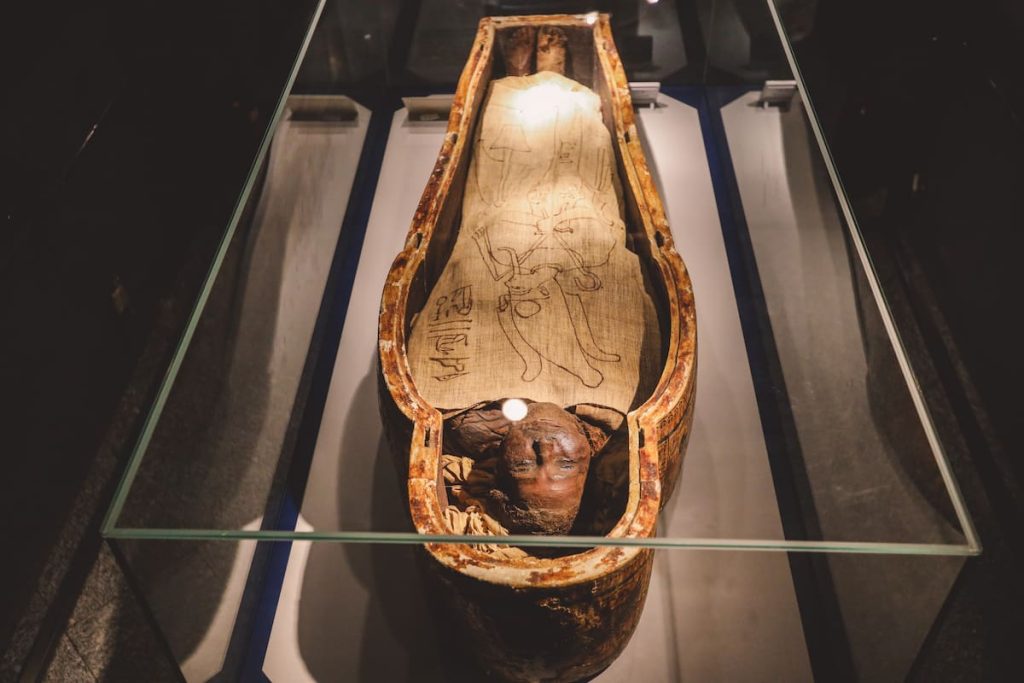
1. Preparing the Body for Mummification
Declaring The Death
This was the first phase of the nine steps of the mummification process. When one of the locals dies, the messenger must publicly announce and declare his death. The family of the dead made arrangements for mourning, and then the second phase of preparation of the body started.
Ritual Purification
Before starting the steps of Mummification, the body was cleaned and prepared uniquely. The ancient Egyptians believed in making the body pure and ready for its journey to the afterlife. They washed the body with sacred oils and resins, removing any impurities. This purification ceremony was essential to ensure the deceased’s transition to the next life.
2. Removal of Organs
The most crucial part of Mummification is removing the inside of the body from organs and other parts. In addition, the people who are responsible for this process are called the embalmers or Special priests. They made a small cut on the left side of the body and carefully removed the organs one by one. This was done to stop the body from rotting and to prepare it for the afterlife, which was very important in their beliefs.
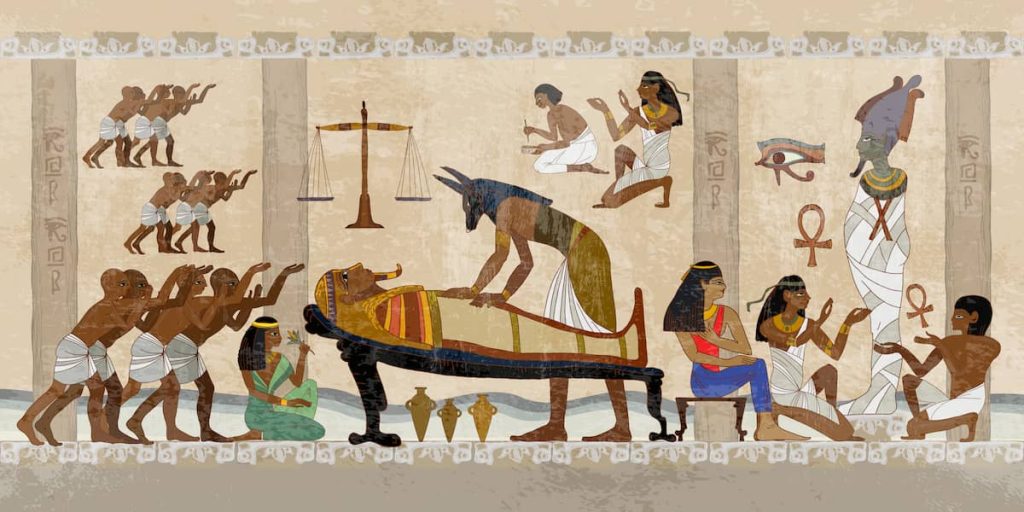
3. Extracting the Brain
In this phase, the brain was considered less important for the ancient Egyptians’ beliefs. Moreover, the priests remove the brain and discard it using a long hook-like instrument to extract the brain. This sensitive operation occurred by extracting the brain through the nostrils and breaking it into small pieces.
4. Storing Organs in Canopic Jars
Firstly, what are the Canopic Jars?
Firstly, The Canopic Jars are containers used by the ancient Egyptians during the mummification process. They believe that this type of container can preserve the organs of the owner for the afterlife. In addition, the Egyptians started to design containers from stones, but later, they developed designs made of Wood. These jars date back to the Old Kingdom, and they were less in use, but in the Middle Kingdom, they became more practical and enhanced. The Canopic Jars were crucial for the ancient Egyptian civilization. Furthermore, Canopic Jars were used in ancient Egyptian funerary rituals.
In addition, the removed organs, including lungs, stomach, intestines, and liver, were carefully stored in the Canopic jars. Moreover, the Canopic jars have the heads of four protective gods (Hapy, Dumutef, Qebehsenuef, and Imsety). These four gods were believed to safeguard the organs and ensure their preservation. Each jar was associated with a specific direction and the protection of a particular organ.
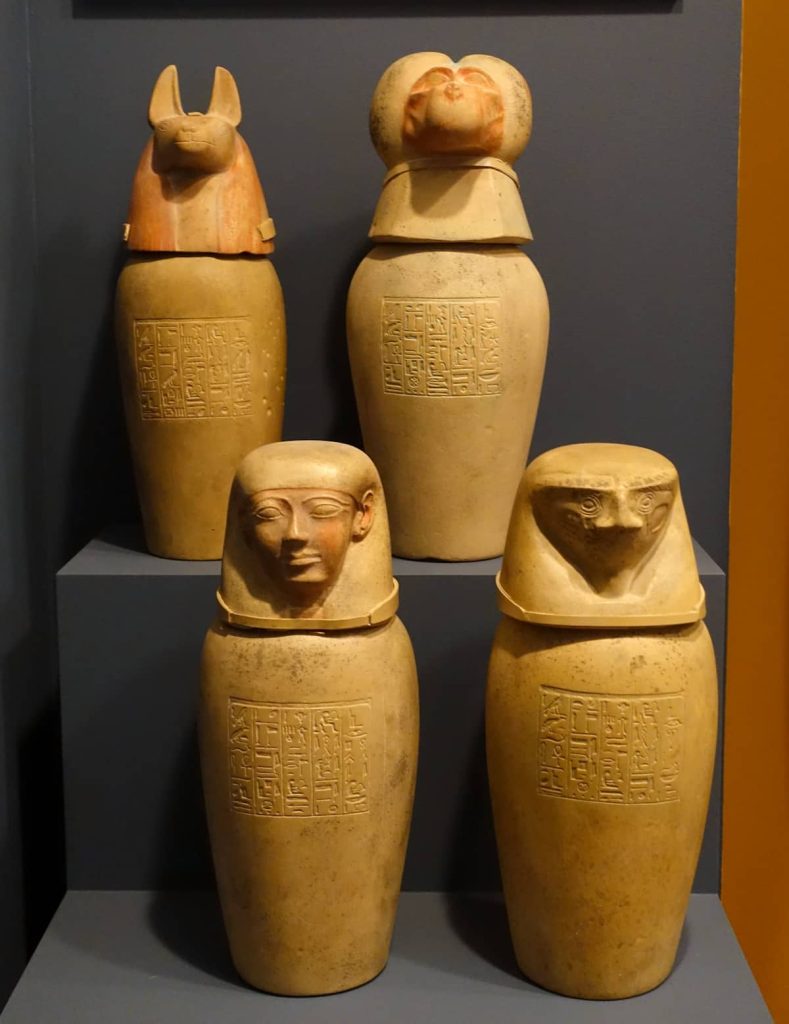
5. Drying and Preserving the Body For Mummification
Drying and preserving the body is a critical step in Mummification. It aims to prevent decay and ensure the body’s longevity. Ancient Egyptians achieved this through the use of a unique substance called natron.
Using Natron
First, what is the Natron?
Natron is a special kind of salt that the ancient Egyptians used to dry and protect the body. After they took out the insides, they covered the body with natron inside and out. This salt was great at soaking up water and preventing bacteria from growing. They left the body with natron for about 40 days to ensure it was all dried out.
Drying the Body
After washing off the natron from the body, it needed to dry completely. So, the Egyptians thought about putting the body inside a tomb or in a room for a long time. The hot and dry weather of Egypt helped the body dry out quickly. This drying time was very important because it stopped bacteria from making the body decay. This process made the body shrink and become very dry, which the ancient Egyptians wanted. They believed that this preservation would help their loved ones in the afterlife. The warm climate in Egypt really helped with this part of mummification, making it extra effective.
6. Wrapping the Body
After the body was dried, it was time to wrap it up carefully. This part of the process was very detailed, and the body was covered with many bandages. Moreover, the process starts with the Eye of Hours. They place it on the body’s abdomen to bless it.
Linen Bandages
the bandages used were made from linen, which is a soft fabric made from flax plants. The Egyptians liked linen because they thought it was pure and special. These bandages were cut into long pieces to wrap the body tightly, keeping it safe and secure.
Amulets and Pretty Things
While wrapping the body, people also added amulets and jewelry. These were like lucky charms, and the ancient Egyptians believed they brought good luck and protected the person who had died. The amulets could have pictures of gods and goddesses or special symbols on them.
Charms to Stay Safe
Along with the amulets, there were also protective charms. These charms were like magic, and people believed they kept away bad spirits and protected the person on their journey to the afterlife. They might have been small statues, symbols, or even written messages with special powers.

7. Adding the Final Touch to Make the Mummy Looks Nice
In this step, the embalmers wanted to ensure the mummy looked the best. So, they added artificial eyes and decorations for the face and other parts. In addition, the head was covered with a special mask, which helped the deceased person’s soul recognize their body. Lastly, this was believed to be important for their journey to the afterlife.
The embalmers then gently placed the mummy inside a beautifully decorated coffin. The coffin might also have pictures and symbols painted on it, telling the story of the person’s life and achievements. Notably, all of this was done with great care and respect, honoring the person who had passed away.
8. Final Rites and Burial of Mummification
After the mummy was prepared, the family and friends would walk together through the town, crying and expressing their sadness out loud. They believed that having more people mourn the loss would help the deceased person reach the afterlife safely. When they arrived at the tomb, a special ceremony called the “Opening of the Mouth” occurred.
During this ceremony, the priests gently touched the mummy’s face, and the family would say magical words or spells. They believed this ritual would allow the mummy to see, hear, eat, and move in the afterlife, ensuring a smooth transition to their new life.
9. Anubis: Guardian of Mummification and the Afterlife
First and foremost, to understand this relationship, we need to know who Anubis is and what his main role was in ancient Egyptian culture.
Anubis was one of the most important gods in ancient Egypt. He was also known as the god of the dead. He was often shown as a man with a jackal’s head or just as a jackal. Anubis’s main role was to guide and judge the souls after they died. Moreover, the reason behind seeing Anubis in every mummification process is that the Egyptians believed that he watches over the process of preparing the body for burial. Additionally, he gave himself the embalming and then led the dead person to the underworld. There, he would decide if they had been good or bad during their life by weighing their heart against a feather.
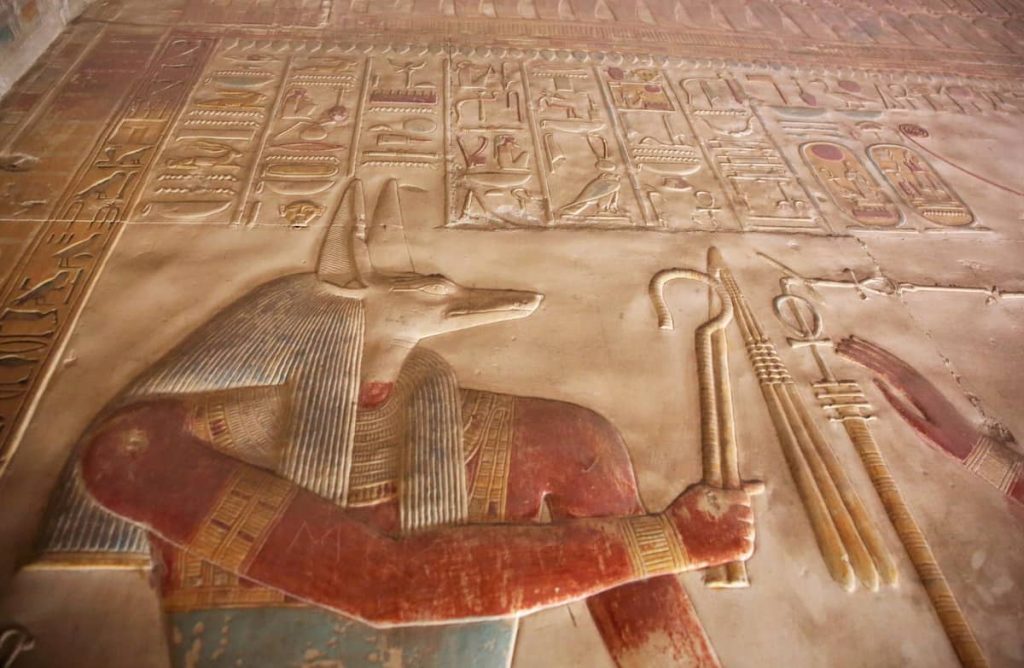
Conclusion
In conclusion, the process of Mummification, as explored in this guide, has revealed all eight steps of Mummification step by step. In order to ensure what mummification is and how this process was so important, it has a deep connection between ancient civilizations and their reverence for the dead. By learning about mummification, we can understand how these ancient civilizations showed respect and followed unique traditions.
Even nowadays, mummies are super interesting, and there are still many secrets waiting to be revealed at the right time. We see them in movies, books, and museums, and they spark our curiosity. Mummies give us a glimpse into how people lived and looked and their beliefs a long time ago, and they keep us fascinated with ancient cultures.

